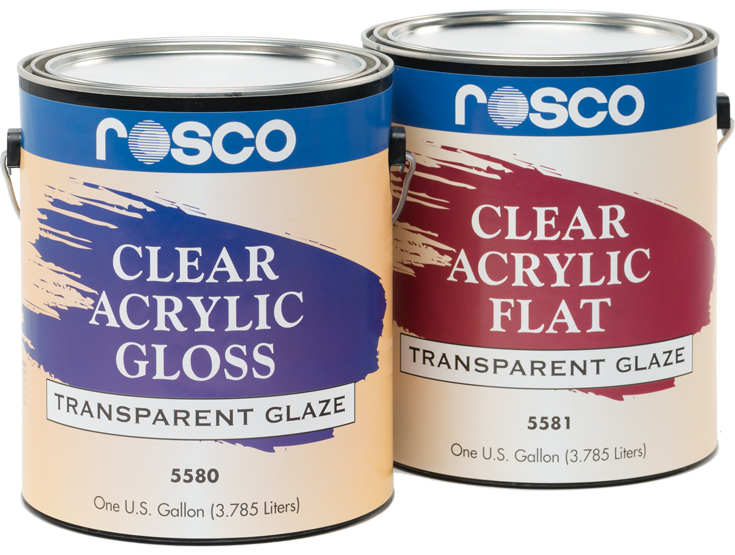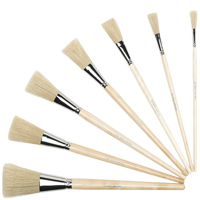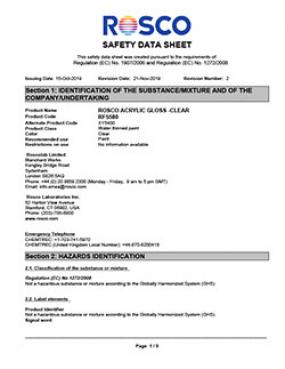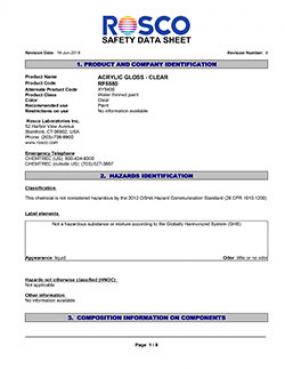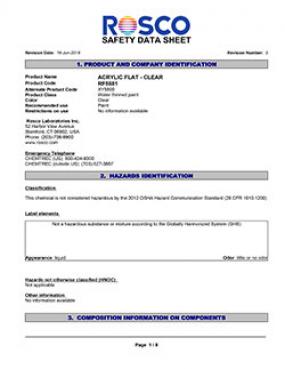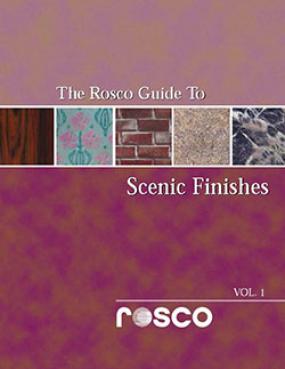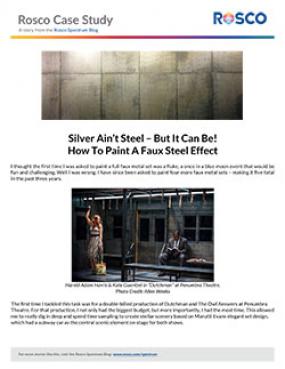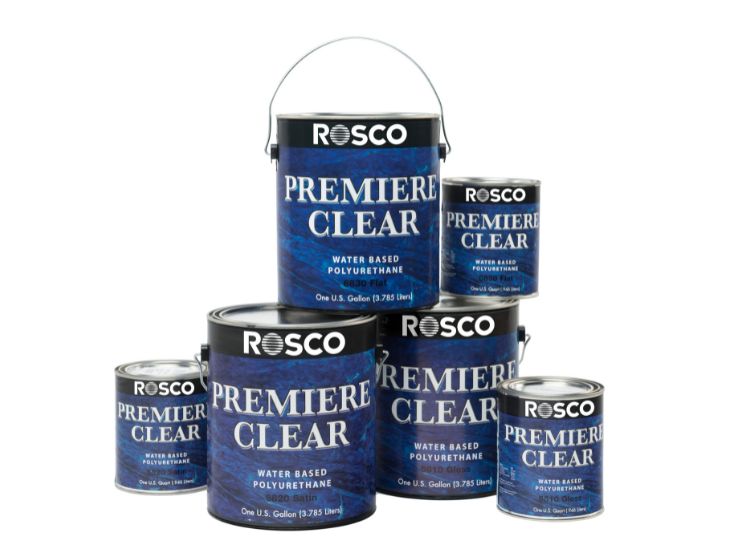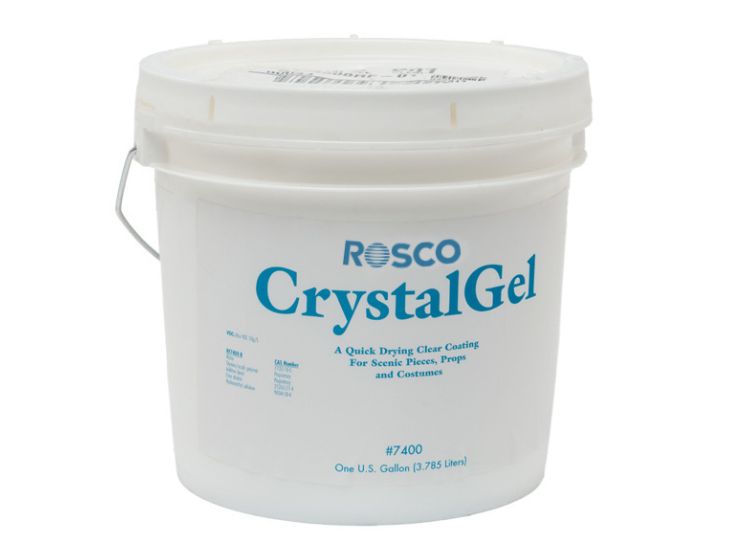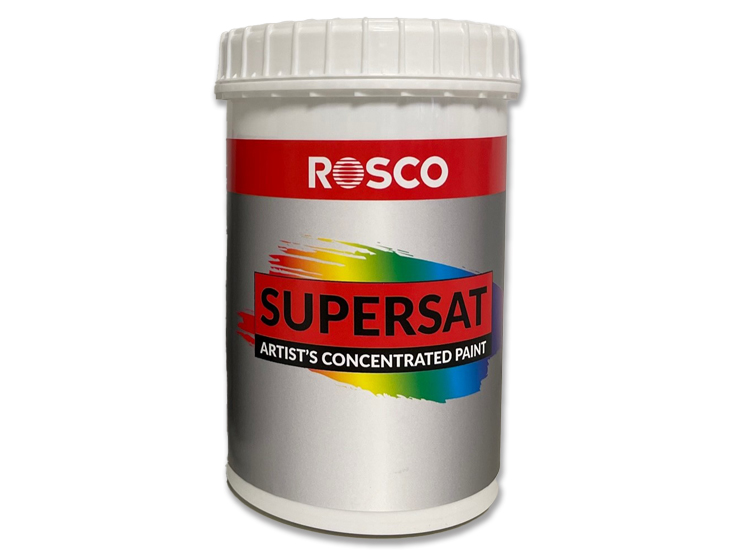Iddings Brushes
Professional quality scenic fitches at an affordable price
- Long natural bristles
- Seamless ferrules
- Long polished birch handles
Iddings brushes are an ideal choice for students, teachers or professional scenic artists.
These low cost scenic liners, or fitches, are carefully manufactured in the United States with long natural bristles to yield a smooth, even stroke. They can be used on a variety of stagecraft materials, including muslin, canvas, lumber and such non-porous surfaces as plastics and metal.
Because the bristles are natural, not nylon, Iddings brushes will become fully charged with scenic paint that is thinned with water, such as Iddings Deep Colors casein paint, Off Broadway, or Supersaturated Roscopaint. Each Iddings brush features a full head of tapered bristles, offering the artist an option of painting a wide or thin stroke.
Seamless nickel ferrules keep the bristles tightly bundled for effective use. Polished, sealed handles have the right heft for students and scenic artists and resist wear and damage.
Iddings brushes should be washed in warm (not hot) water immediately after use and rinsed until all traces of paint have been removed. They should be laid flat or hung by the handles for drying. Periodic cleaning of the brush head and soaping the bristles into place after cleaning will aid in maintaining its original shape, prolonging the life of the brush.
All technical data, recommendations and service are accurate to the best of our knowledge. Rosco assumes no responsibility for the results obtained or damage incurred from use by the buyer in whole or in part since method of application and its use is beyond our control.
- 1/4" (6mm) Ferrule Width, 1 1/2" (38mm) Bristle Length155056100025
- 1/2" (13mm) Ferrule Width, 1 3/4" (44mm) Bristle Length155056100050
- 3/4" (19mm) Ferrule Width, 2" (50mm) Bristle Length155056100075
- 1" (25mm) Ferrule Width, 2 1/4" (57mm) Bristle Length155056100100
- 1 1/4" (32mm) Ferrule Width, 2 1/2" (64mm) Bristle Length155056100125
- 1 1/2" (38mm) Ferrule Width, 2 3/4" (70mm) Bristle Length155056100150
- 2" (50mm) Ferrule Width, 3" (76mm) Bristle Length155056100200
- 3" (76mm) Ferrule Width, 3 1/2" (89mm) Bristle Length155056100300
- 7 Brush set Includes 1/4" - 2" Fitches155056107KIT
- 8 Brush set Includes 1/4" - 3" Fitches155056108KIT

